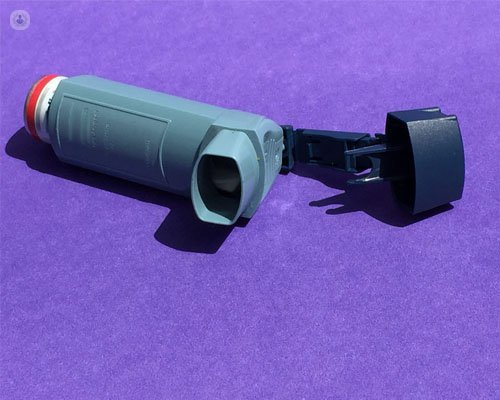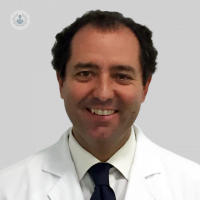5 Key points about asthma
Written by:Asthma is a chronic disease that causes inflammation and narrowing of the airways. This narrowing can be reversible in mild cases, but in many cases is usually permanent.
This respiratory disease can develop at any age and affects both children and adults. In fact, asthma is the first chronic disease in children and is increasing its incidence in the adult population.

Causes of asthma
Although the causes of asthma are not yet final, the main considered are:
- Genetics: various genes, such as those related to allergies, are associated with an increased risk of asthma. Asthma has a significant genetic predisposition, although it is transmitted very complex way through atopy (how the body defends antigens).
- Environment: some environmental factors such as allergens or pollution can trigger asthma attacks. This is because the airways exaggeratedly respond to a variety of stimuli.
- Other factors: infection of the airways, cold air and exercise can trigger asthma attacks. So the best method is to prevent asthma is to avoid contact with the causes that produce it, especially allergic in nature (pollen, pets, dust mites, etc.). It is also recommended to avoid viral or bacterial infections, as they are precipitating causes of asthma attacks.
Symptoms of asthma
The main symptoms for which patients go to a specialist in Pneumology on suspicion of asthma are:
- dry and opinionated in the morning or during an exercise cough
- Tightness in the chest
- Feeling of breathlessness while running
- Wheeze during the cold
Asthma Complications
Although asthma is usually controllable, sometimes it can be especially difficult, called serious or risk. In these cases, doctors should be stricter controls and consultation should be nearest emergency service if the disease does not improve in the manner and as quickly as expected.
Some asthma patients can suffer severe asthma attacks, which can even be lethal. It is estimated that worldwide 180,000 people a year die from asthma. Most asthma deaths occur in people over 45 years and within this group, 40% have 75 or more years.
Diagnosing Asthma
To diagnose asthma, a series of tests ranging from superficial to the more specific based on the data obtained is needed:
- Spirometry determines whether there is an obstruction to airflow in the airways.
- Aerosol bronchodilator: this instrument is administered and repeated spirometry. It is used to determine whether the obstruction is reversible or not.
- Bronchial provocation test: the patient inhales a substance that acts as a bronchoconstrictor to see how he reacts.
- Measurement of inflammation: if the center has the equipment to measure the concentration of nitric oxide and number of eosinophils in the saliva, these tests may also be helpful.
- Additional tests: used to rule out other diseases. More tests are conducted blood tests, chest X-ray and allergic skin tests.
Asthma Treatment
Asthma treatment that has always been done in Pneumology is pharmacological, and can be of various types:
- Bronchodilators is administered fast - acting inhaled bronchodilators in order to relax the airways and relieve symptoms of wheezing and breathing difficulties.
- Inhaled corticosteroids: is normally administered in a daily regimen to control inflammation of the airways, usually daily regimen.
- Combination therapy: involves administering bronchodilators in combination with corticosteroids. It is used in cases of more severe asthma.
With proper treatment, you can get to an improvement of symptoms (5% of patients do not have enough treatment to control symptoms).
It is known that more than 50% of patients remain effective control of their disease, and as a group of patients with severe asthma who, despite using the therapeutic arsenal available not get control. This underscores the need for new therapies and to define the patient profile where they can be more effective. In this sense we have new therapies, among which are:
- Bronchial thermoplasty: involves applying radiofrequency heat generated by a catheter that is inserted into the bronchial tree flexible bronchoscopy, to reduce the amount and smooth muscle contractility improving bronchial remodeling and bronchospasm.
- Biological therapies and monoclonal antibodies


